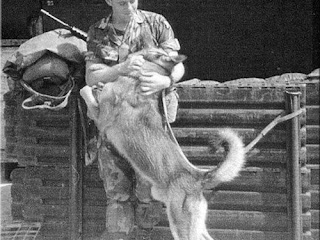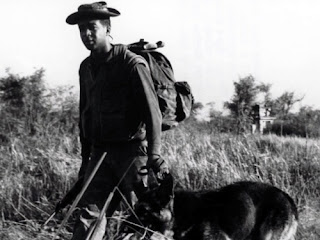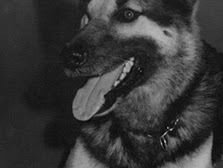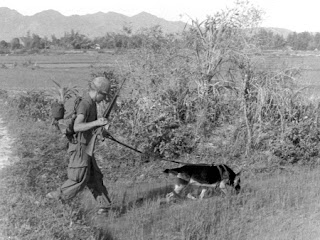Prince and his handler Ed Reeves served together in Vietnam for a little over one year. Years later after having to leave Prince behind, Reeves learned that Prince was one of the very few war dogs to return home after the US troops pulled out.
 |
| Ed Reeves and his scout dog Prince. |
Ever since he was a child, Ed Reeves always wanted a German shepherd. Before being drafted into the Army in 1969, the young Reeves helped a police officer train his city's very first police dogs. It was this passion that led him to volunteer for dog training school.
Reeves spent five months training Prince to become a scout dog. Their hard work paid off. Prince, who was responsible for sniffing out enemy troops, mines and tripwires, is credited for saving many lives, including Reeve's... "If it wasn't for him [Prince], I wouldn't be here today. I owe him my life a couple of times. He kept me from stepping on a mine and he kept us out of ambushes."
In 1971, Reeve's returned home and Prince stayed in Vietnam working with a new handler. Reeves said the hardest thing about serving in the Vietnam War was leaving Prince behind. In his book My Search for My Vietnam Scout Dog Prince, Reeve's recounts the last few moments with his dog "I cooked up two steaks, put them on a plate, cut them into little pieces, and went to Prince’s dog house. We sat on the ground and ate the steaks piece by piece. I wasn’t supposed to have contact with Prince because he had a new handler, but I just couldn’t pass up this opportunity."
Some 4,000 dogs served in the US military during the Vietnam War, and many died doing so. It is reported that over 10,000 lives were saved because of the dogs and their handlers. When the US pulled out, only 204 dogs exited Vietnam to continue their military career in the Pacific and US. The thousands of other dogs that survived were left behind to be euthanized or given to the South Vietnamese Army who were not trained to use the dogs - some believe these dogs were used as a food source.
Thirty-five years later, Reeves learned Prince was one of the 204 dogs who exited Vietnam. According to military records, Prince continued his military career as a drug-sniffing dog for US Customs. Eventually, he made his way to a kennel in San Diego where he passed away in 1983 of natural causes.
Tomorrow (Sep 28, 2019) there will be a ceremony at Motts Military Museum near Columbus, Ohio to officially dedicate a memorial to the Vietnam War dogs and their handlers. The monument will feature a life-sized bronze statue of an Army soldier and his dog, and a black granite wall with the names and tattoo numbers of all 4,235 dogs that served and the names of 300 handlers that died in Vietnam.






















